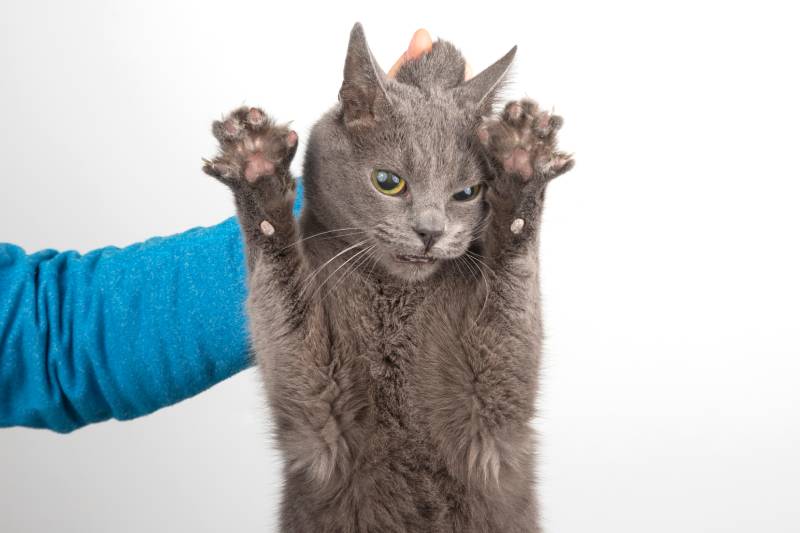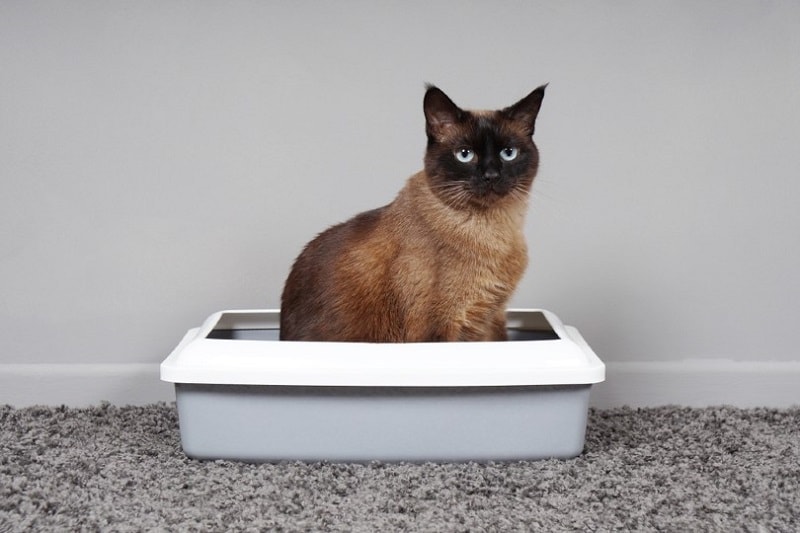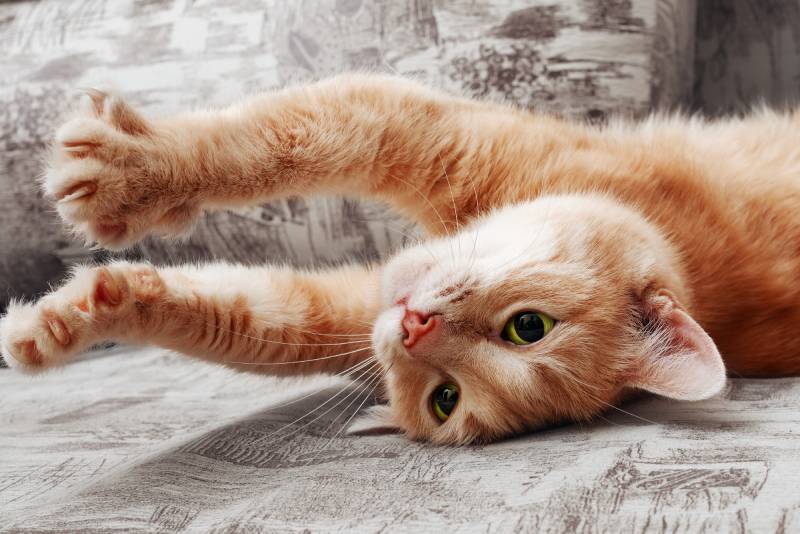Why You Should Never Scruff a Cat: Vet-Reviewed Risks & Safety Tips
By Jordyn Alger
Updated on

Click to Skip Ahead
Cats can be curious and mischievous and get into things they shouldn’t. You may feel like you’re at your wits end trying to keep your cat out of the trash or off the counters, and you just want to pick them up by their scruff and remove them from the situation. While it is okay to pick up your cat and remove them from the area, you should never scruff your cat.
Scruffing your cat or lifting them by the skin on the back of their neck is frightening and painful for your cat. It may cause them to be fearful or distrusting of you, thus damaging the bond that you have fostered.
Why Scruffing Is Not Okay
Scruffing your cat is never an appropriate way to pick them up or hold them still. In the past it was a more commonly used method of restraint to keep fractious kitties under control, for example in the vet clinic. This was done in response to the theory that scruffing a cat may trigger the same response in them as when their mother scruffed them as kitten.
In reality kittens have a reflex that causes them to go limp when picked up by the scruff, but this reflex is lost as they grow. When adult cats appear to ‘relax’ when scruffed, they are actually very fearful, behaviorally shutdown and feeling helpless. In other cats fear and panic caused by restraint through scruffing can cause or escalate defensive aggression.
As a result, most vets are using other gentler methods for handling high-strung felines. There are lots of different ways of handling and restraining cats without scruffing. Allowing cats to come out of the cat carrier themselves can help them to be less fearful, as can letting them remain in the carrier with the top taken off for examination. Towels are also helpful, many cats feel less stressed if they can hide their head under a towel or blanket, and wrapping techniques can be used.

How to Pick Up Your Cat
Scruffing is a frightening, potentially painful experience for cats. When you scruff them, they lose trust in you. To maintain your cat’s dignity and respect, it is important that you pick them up correctly if the need arises. Proper handling can go a long way to strengthening your bond with your cat.
First, Make Sure Your Cat Wants to Be Picked Up
Before picking your cat up, determine whether they want to be picked up. If your cat doesn’t want to be picked up, picking them up anyway may cause the same amount of fright as scruffing.
To ensure your cat is fine with being picked up, study their body language. If they’re relaxed and open to interaction, they will likely be okay with being picked up. Relaxed cats often have soft expressions. Their ears will face forward, and they will blink slowly.
On the other hand, cats that do not want to be held may have dilated pupils and their ears flat against their heads. Their muscles may be rigid, or they may try to escape from you. If you notice these signs, it is best not to pick up your cat immediately. That is, of course, unless it’s an emergency, in which case placing a towel gently over them before picking them up can be helpful.
Once you have determined that your cat is ready to be picked up, you should do so correctly to ensure that you do not harm or frighten them.

Properly Picking Up Your Cat
While each cat will have preferences regarding handling, there are some general guidelines that you can follow. When picking up your cat, do not face them straight on. This can be frightening to them. Instead, face the same direction as your cat and slowly crouch beside them.
With both hands, touch the tops of their shoulders. Then, gently slide your hands along the outer side of their body before placing your hands under their chest. Your fingertips should be pointing toward your cat’s face.
Carefully tuck your cat’s hind end against the crook of your elbow, similar to holding a football. This provides support for your cat and makes them feel less fearful. With your other hand, offer extra support at the front of their chest.
If your cat enjoys being picked up, they will typically settle into their preferred position. For instance, some cats love to dangle their legs, while others want to be curled up. Whatever your cat’s preferred position is, give them the room needed to situate themselves.
When preparing to put your cat down, do so slowly. Only release your cat once all four paws are on the ground.
Can Cats Be Trained to Enjoy Being Held?
Does your cat hate being held? If so, picking them will be a challenge. Thankfully, cats can be trained to feel more comfortable with the experience of being held. Start by enticing your cat with a tasty treat. Offer it to them as you hold them.
As your cat begins to adjust to the sensation, you can gradually lengthen the time they spend in your arms. However, you should always release your cat if they show signs of annoyance or distress.
Final Thoughts
Scruffing your cat is not an appropriate way to pick them up or restrain them. In adult cats it triggers fear and stress and removes their sense of control. Instead, you should focus on picking your cat up in a way that doesn’t harm or startle them. If your cat doesn’t enjoy being picked up, you can help them adjust by giving them treats when you hold them. Teaching a cat to enjoy being held can be a great resource during vet appointments or emergencies.
Featured Image Credit: Oleg Troino, Shutterstock











